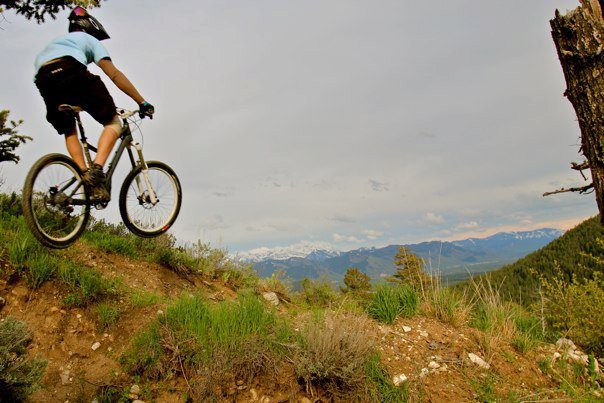Product: SRAM X9 10-Speed
Location: 45% Jackson, 45% Grand Junction, 10% Denver (front range)
Duration of test: ~2,000 miles
Type of riding: XC/Trail, DH, Enduro racing
Bike: Giant Reign X 170mm
Rear Derailleur: X9 Short Cage 10 speed
Shifter: X9 10 speed
Chain: Various
Guide: MRP G2 mini
Crankset: XT
Chainring: 32 (to start) 36 (currently)
When it comes to drivetrains, I am usually not too picky. After all, most places I have called my “home trails” involve a long ascent followed by a pedal-only-when-you-want type of descent. Sure, there are exceptions to this (such as the few Super D races I’d do every year), but at the end of the day, so long as my bike generally shifts when I tell it to, I don’t really care what is hanging off the back of the bike.
So when SRAM introduced their 10 speed XX drivetrain some years back, I just thought, “Great, another standard in the mountain bike world.” It was expensive, marketed toward XC racers, and prone to wearing faster—and for what? For tighter gear ratios that will allow me to dial in a perfect cadence for hammering the road back to the trails?
But alas, my jaded mindset finally changed, and for three reasons. First, both SRAM and Shimano began offering 10-speed groups at a far more economical price point. Second, my riding buddies who made the jump to 10-speed had very positive short-term testing experiences with the stuff, noting no significant adjustment or wear problems. Third, and most importantly, I realized I had overlooked perhaps the most important thing 10-speeds offers: an increase in gearing range on the rear cassette.
Somehow I had overlooked the fact that by going to a 10-speed setup, I’d gain an extra few teeth on the cassette; 36 teeth compared to 32 or 34 teeth offered in the 9-speed stuff. This may not sound like much, and honestly, it isn’t a massive difference. But to me, the extra 5.4% taller cog was just enough to warrant the upgrade in June of 2010.
SRAM vs Shimano?
Just to be clear, this is not a review pitting Shimano against SRAM. I have no qualms with Shimano components, I just haven’t run them on my bikes in quite some time. I guess I committed to the SRAM Kool-Aid a while back, and subsequently amassed enough parts to keep me riding that bandwagon. My point is, if you are looking for a direct comparison, you won’t find it here. But if you are looking for a SRAM 9 VS 10-speed comparison, then this is your review.
Inspection / Installation:
For those not familiar, SRAM’s lineup, starting with the most top end, includes the XX, X0, X9, X7 and finally, the X5. To give an example of weight difference between XX, X0 and X9, the rear derailleur (medium cage) claimed weights are as follows:
· XX: 170 grams
· X0: 189 grams
· X9: 195 grams
Yup, that’s right, there is only 25 grams separating SRAM’s top of the line XX (MSRP: $299) and the middle-of-the-road X9 (MSRP: $99). For the mathematically challenged, this means that you can buy three X9 derailleurs for the price of one XX.
I chose the X9-level stuff because it had performed well in 9-speed, weighed just a few grams more than SRAM’s top-end stuff, and the price point was such that if I ripped a derailleur off, I wouldn’t start sobbing on the side of the trail.

